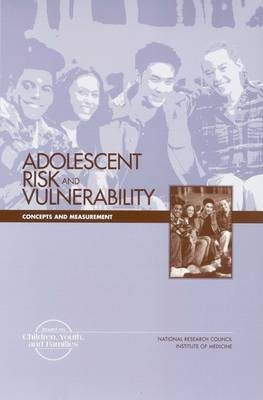Adolescent Risk and Vulnerability(English, Paperback, National Research Council)
Quick Overview
Product Price Comparison
Adolescents obviously do not always act in ways that serve their own best interests, even as defined by them. Sometimes their perception of their own risks, even of survival to adulthood, is larger than the reality; in other cases, they underestimate the risks of particular actions or behaviors. It is possible, indeed likely, that some adolescents engage in risky behaviors because of a perception of invulnerability-the current conventional wisdom of adults' views of adolescent behavior. Others, however, take risks because they feel vulnerable to a point approaching hopelessness. In either case, these perceptions can prompt adolescents to make poor decisions that can put them at risk and leave them vulnerable to physical or psychological harm that may have a negative impact on their long-term health and viability. A small planning group was formed to develop a workshop on reconceptualizing adolescent risk and vulnerability. With funding from Carnegie Corporation of New York, the Workshop on Adolescent Risk and Vulnerability: Setting Priorities took place on March 13, 2001, in Washington, DC. The workshop's goal was to put into perspective the total burden of vulnerability that adolescents face, taking advantage of the growing societal concern for adolescents, the need to set priorities for meeting adolescents' needs, and the opportunity to apply decision-making perspectives to this critical area. This report summarizes the workshop.Table of Contents Front Matter 1. Adolescent Risk and Vulnerability: Overview 2. Perceptions of Risk and Vulnerability 3. Vulnerability, Risk, and Protection 4. Modeling the Payoffs of Interventions to Reduce Adolescent Vulnerability 5. Adolescent Vulnerability: Measurement and Priority Setting Appendix: Workshop Materials


